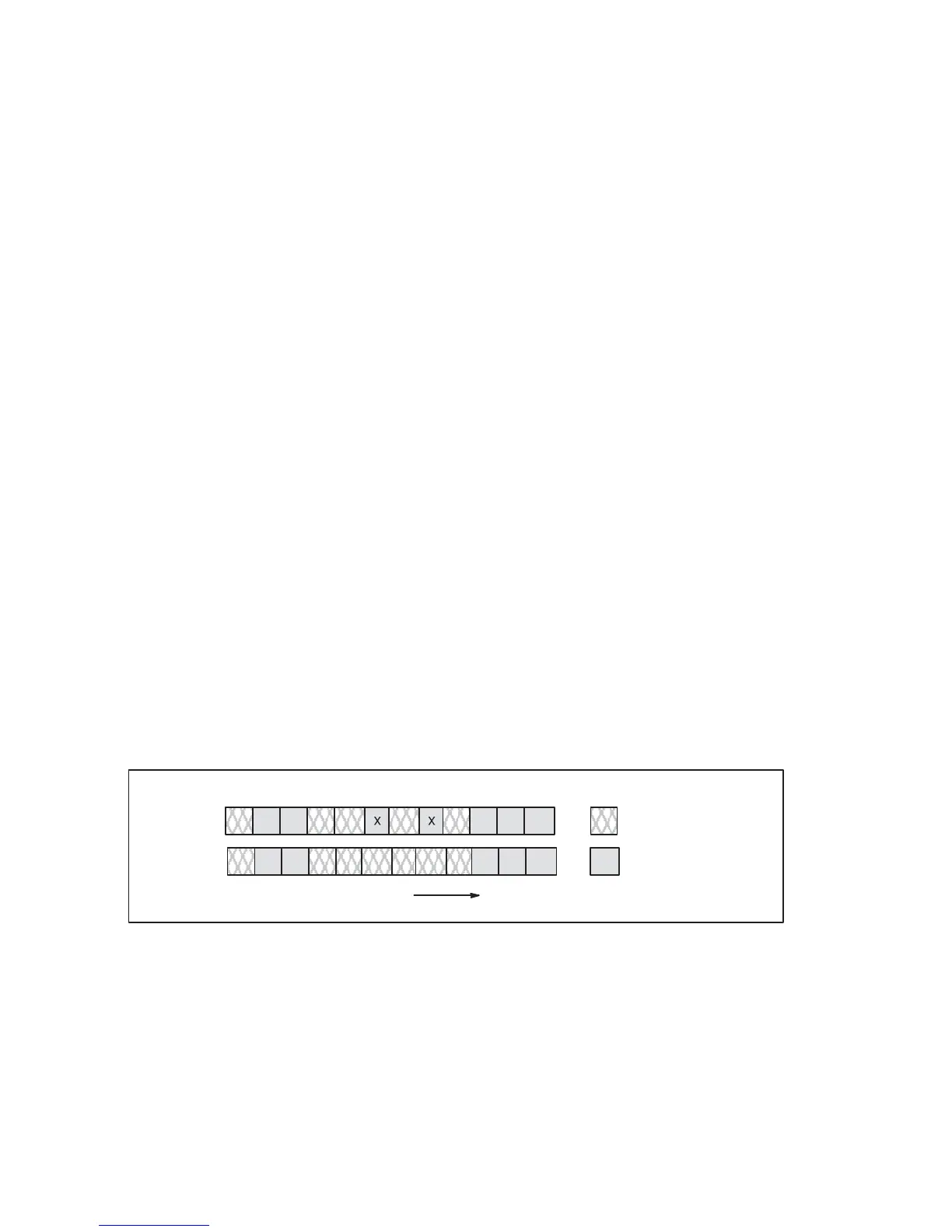USER’S MANUAL__________________________________________________________________
230 _________________________________________________________________ M211322EN-D
- 2D 3x3 speckle filter—If enabled, this is used for any output
parameter.
The 1D and 2D speckle filters are enabled using the soprm command.
Input 2, as documented in Section 7.3 Setup Operating Parameters
(SOPRM) on page 259. These can both be turned on, if desired, and in this
case, the 1D filter is applied first.
Both of these speckle filters remove isolated data points that are likely to
be noise, interference, aircraft, birds, or other point targets. Meteorological
targets typically occupy multiple range bins, so they are not affected by the
speckle filters. There are two primary benefits to using a speckle filter:
- Displays look "cleaner" to observers
- Thresholds can be set slightly more sensitive without increasing the
number of noise pixels
The 2D 3x3 speckle filter actually performs data filling of "missing
speckles" as well as eliminating isolated speckle bins. The following
sections describe the algorithms.
6.4.3.1 1D Speckle Filter
A ray is the basic azimuth unit of the RVP900 (for example, 1 degree) over
which the samples are averaged to obtain the output base data (T, Z, V, W).
For this filter, a speckle is defined as any single, valid bin (not
thresholded), having thresholded bins on either side of it in range. Any
such isolated bin in a ray is set to "threshold". The algorithm is shown
Figure 47.
0916-059
Figure 47 1D Speckle Filtering
There are two independent 1D speckle removers: one for the reflectivity
data (dBT, dBZ, Z
dr
, and LDR when using dual-pol), and one for the
Doppler data (V, W, PhiDP, RhoHV, and K
dp
when using dual-pol). Each
one should be switched on or off, depending on the specific nature of the
targets being observed. For example, when making a clutter map of the

